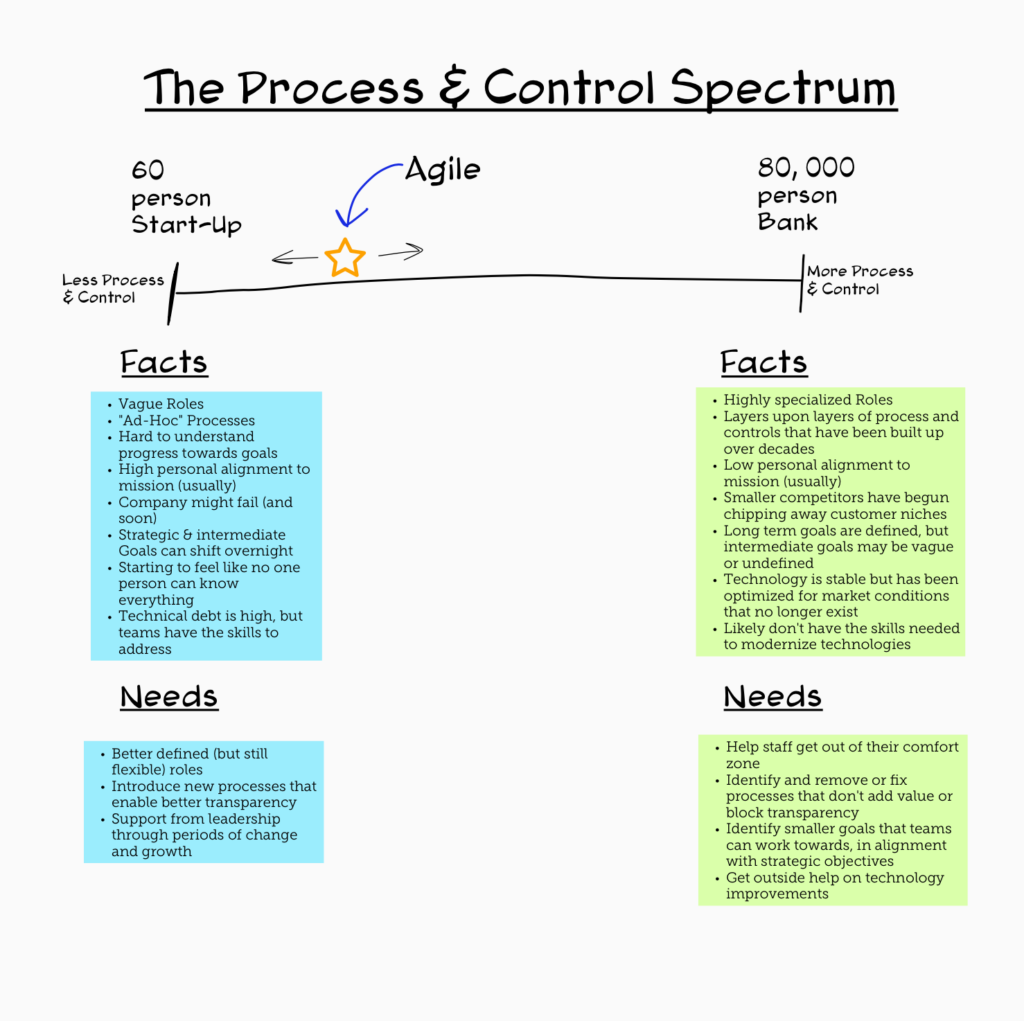In the Winter of 2016 – 2017, I changed jobs.
I had been working as an Agile Coach at a 60-person technology start up here in Toronto, Canada and after helping them to stabilize their value delivery process, I wanted to get some experience as a Coach within larger companies.
And so I took a Coaching job at the largest bank in the country.
I went from being the only Agile Coach at a 60 person company, to being on a team of coaches at an 80,000 person company.
This was, unsurprisingly, an absolute jolt to my senses.
Now, this post isn’t about coaching at a bank. This is about one critical insight that I gained through this experience, one that you may want to consider as you decide on the next steps in you or your company’s Agile journey.
The hard reality is that “Agile” means something completely different to every organization.
As much as we’d like to standardize on best practices, and copy & paste techniques from one company to the next, it just doesn’t work that way.
Going from a 60 person company to an 80,000 person bank made this absolutely clear to me.
For every company the starting point is totally different, the strategic and improvement goals are not the same and even the guiding principles can vary greatly.
There is a ton of nuance to this, but most of it boils down to where you are on the Process & Control Spectrum – and where you’re trying to get.

A lot of “Agile advice” comes from people who have spent most of their careers coming at agile from the right side. And so their experience is mostly in change that results in fewer processes and less direct control (for management, at least). And that makes complete sense. Any 150 year old company who wants to have more Agility is going to need to unwind a LOT of structure and process cruft that has built up over the years.
For example, high effort, steering committeesand highly detailed status reports are replaced with some combination of effective Sprint Reviews and lightweight portfolio governance techniques.
But what if you are coming to Agile from the left, where there is little or no governance in place? You are probably going to need to add some new processes and control mechanisms. In a strange way, you will need to add some rules and friction to the organization in order to increase transparency and uphold empiricism.
Many teams and organizations fear doing this, because each step towards the right side of the continuum feels like a step closer to becoming one of those dreadful incumbents they are looking to disrupt!
You can instead focus on finding the sweet spot by taking a minimalist approach and applying Professional Scrum and Kanban throughout the organization.
If you inch too far to the right, Professional Scrum will make it obvious that you’ve gone too far. Scrum Teams will start to report process related impediments during their Sprint Retrospectives.
Using Kanban (especially at the Portfolio level) will ensure that the processes you’ve introduced are contributing positively to your organization’s ability to manage and reduce Work In Progress. Flow-based metrics will help you understand if your organization is becoming more efficient, effective and predictable.
In short: If you’re a growing start-up, don’t be afraid of ending up with too much process. The alternative is continued chaos and little hope for long term survival. You just need to be thoughtful, start small, and be willing to change based on what you learn. Easy!

